|
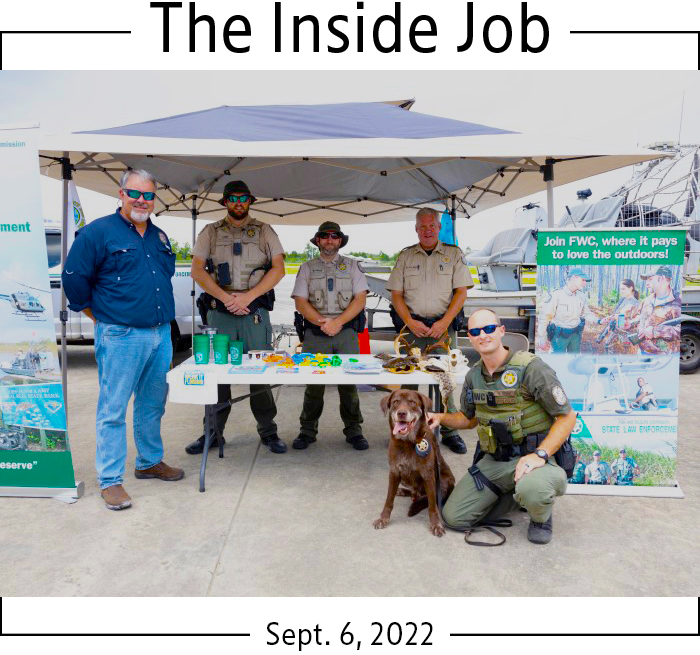 View this as a webpage
By Gil McRae, FWRI Director
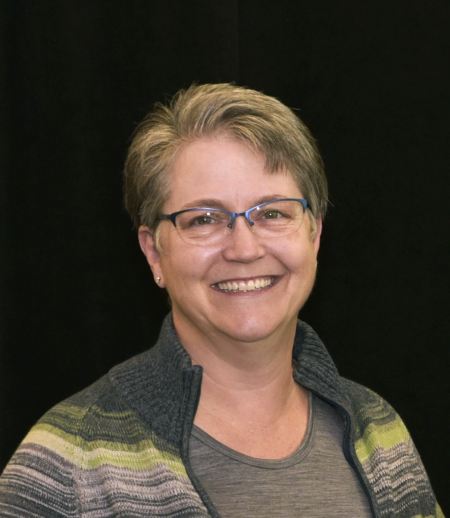
FWC Chief of Staff Jennifer Fitzwater has retired, which is hard to believe for a few reasons. First, she is just a few months older than I am and I can’t understand why anyone would be retiring at such a young age. Second, those of us who have worked closely with Jennifer for years simply cannot imagine an FWC without her intelligent, compassionate and collaborative presence that has done more to set the tone for our agency than most folks know.
I first met Jennifer nearly 20 years ago when she was legislative affairs director with DEP. We would sometimes find ourselves in the same committee meetings where legislators might have questions about issues that overlapped our two agencies, such as water quality and red tide. I remember watching her at the podium and thinking, “She didn’t really answer the question but all of the legislators seemed satisfied with her response.” Quickly I realized that she had such a strong grasp of the context and background of the issue (and often a good understanding of the perspective of the legislator asking the question) that her short, concise responses were so much better than any long-winded technical answer I might give to the same question. I also realized that it was time to start learning from her, something I continue to do till this day.
Jennifer is both a lawyer and a wildlife biologist, and there can’t be many of those around. Her systematic mode of tackling a problem coupled with an understanding of the complexities and variability associated with trying to understand natural systems has been tremendously valuable to the agency. As chief of staff, she oversaw much of the business and administrative functions of FWC and was often the first point of contact within the agency for calls from legislators and the Governor’s office. Some of these are not your ordinary calls – the response given (often with very little or no time to gather information) can have significant long-term repercussions for FWC programs and whether or not we get the budget support we need. I have seen Jennifer in action many times in this context and, although most of you will never know the details, rest assured that we have Jennifer to thank for much of the generally robust level of support FWC receives from our legislature, stakeholders and the Governor’s office.
Jennifer was aways the first person I called when I needed to figure out the nuances of a complex issue, understand how the law applied to something we do, or wanted advice on how FWRI could conduct its mission more effectively. These calls were not uncommon – so much so that I had a weird thing happen to me one time. Out of the blue, Siri on my iPhone asked me: “Is Jennifer Fitzwater your sister?" Before I could figure out why Apple’s artificial intelligence would come to this conclusion and give some sort of reply, Siri then stated: “Ok, I will make Jennifer Fitzwater your sister.” Thereafter, I simply had to ask Siri to call my sister to reach Jennifer. For me, a child in a family of four boys – I can’t think of anyone better for my virtual sister.
Jennifer also has a deeply compassionate interest in the well-being of FWC staff. She was at the forefront of working with the Fish & Wildlife Foundation of Florida to establish the FWC employee assistance fund. This fund has assisted many FWC employees who have been impacted by major life events such as hurricanes, loss of a home due to fire or loss of a family member. This capability to help our FWC family members in need continues to grow due to Jennifer’s influence and interest.
I know many of you have not had the pleasure of meeting or working with Jennifer and that she tried to leave on a low-key note but her impact on our agency will be meaningful and long-lasting. So much so, that it seems not enough to say Jennifer worked for FWC – Jennifer helped build FWC into the agency it is today. I know our new Chief of Staff, Jessica Crawford, has the experience, intelligence and knowledge of the agency that it takes to excel in the position and build on Jennifer’s legacy.
I now have an upgraded iPhone that does not randomly assign virtual family members to me and Jennifer has told me I can call her anytime post-retirement but she may be just humoring me. Jennifer, you have been a fantastic colleague and friend to me, and many others and you will be truly missed. Best of luck to you in your travels.
|

GOOD NEWS! Preliminary statewide totals for sea turtles nesting on Florida beaches indicate the 2022 nesting season is very good for loggerhead and leatherback turtles. As of July 31, 111,851 loggerhead nests and 1,756 leatherback nests have been documented, these numbers are higher than the entire 2021 nesting season! It looks like the same forecast is also in store for the green turtle nest count with 24,577 nests as of July 31, and we still have two months of heavy green turtle nesting ahead.
Thanks to all the FWRI partners involved in an outstanding community science effort to document sea turtle nesting activity statewide!
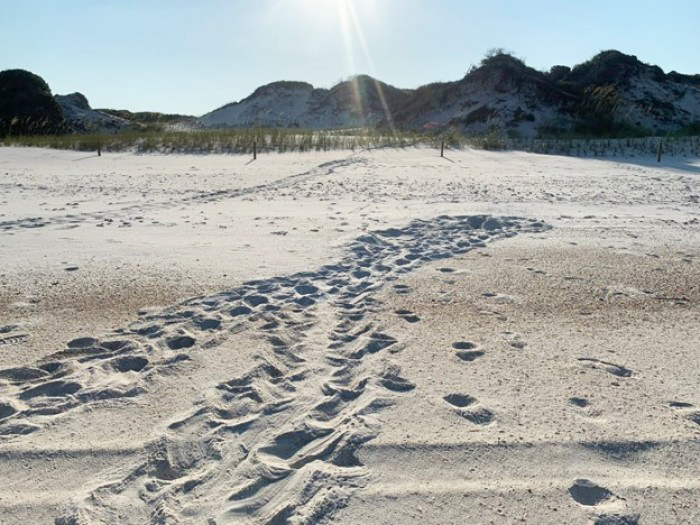 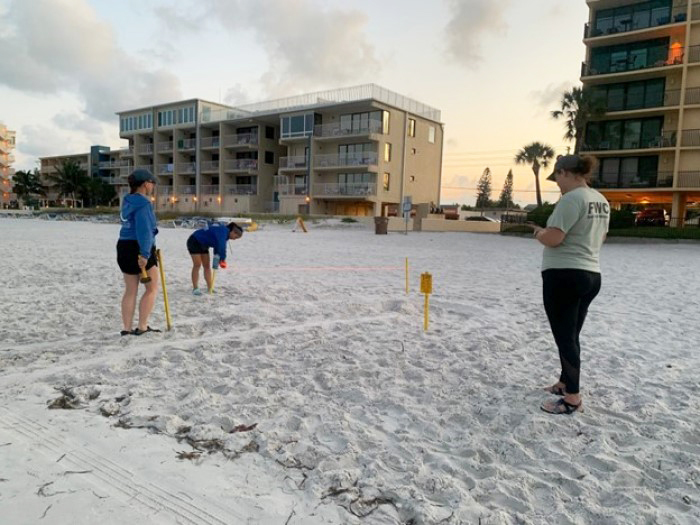
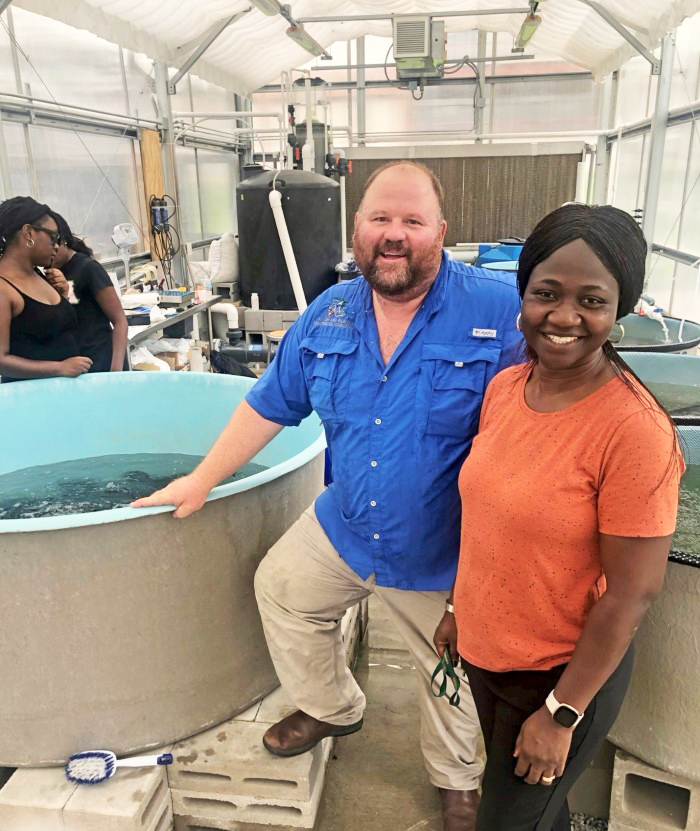 FWC recently donated 200 sub-adult channel catfish to Florida A&M University's Center for Water Resources. The catfish will be used for a variety of aquaculture studies by students and staff under the guidance of Dr. Omolola Betiku. A special thanks to the Florida Bass Conservation Center (FBCC) for providing the catfish for this research.
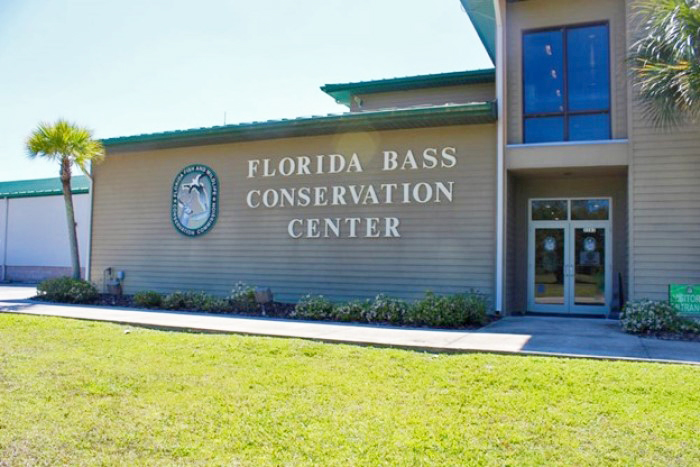 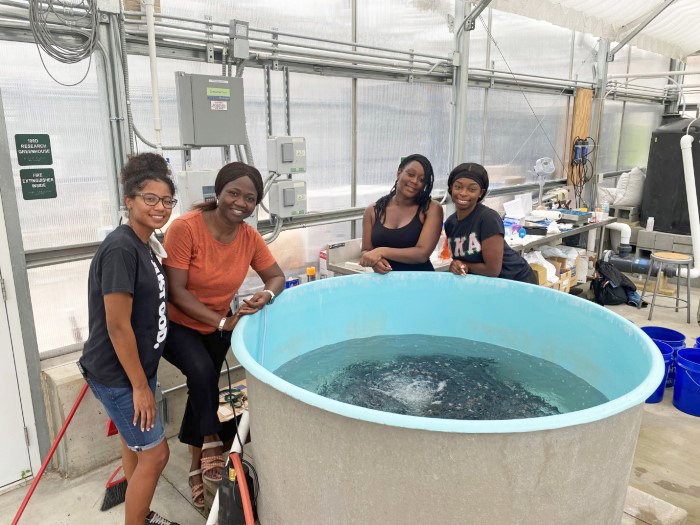
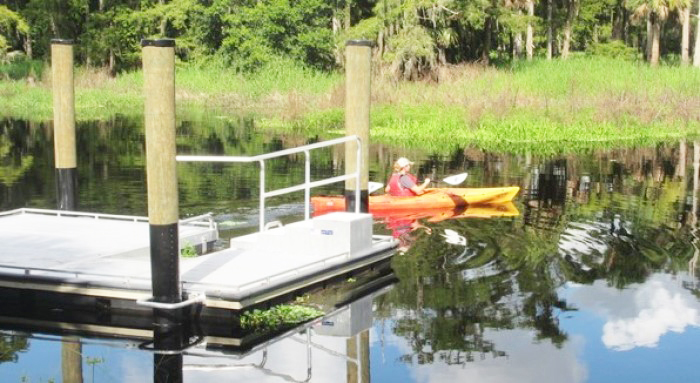 The Public Access Services Office is excited to announce the completion of a new ADA-accessible paddlecraft launch at the Fisheating Creek Wildlife Management Area campground near Palmdale in Glades County. The launch facility includes accessible parking, a sidewalk and a floating dock, and gives visitors the opportunity to launch from the campground and paddle through the beautiful Fisheating Creek WMA
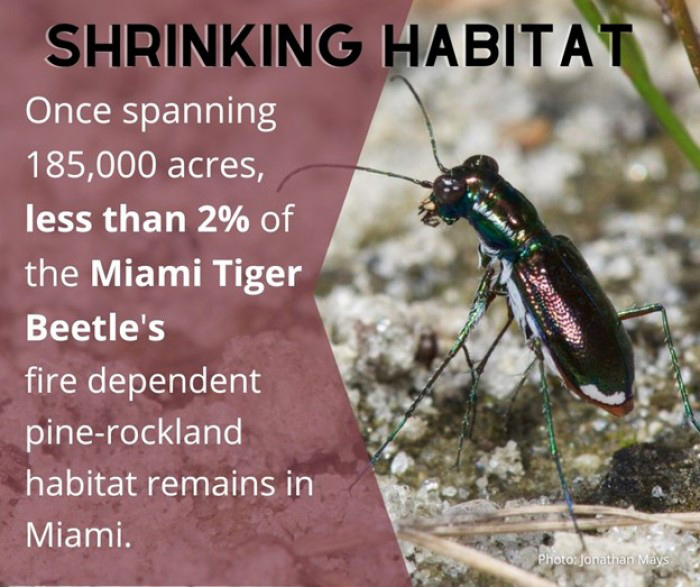 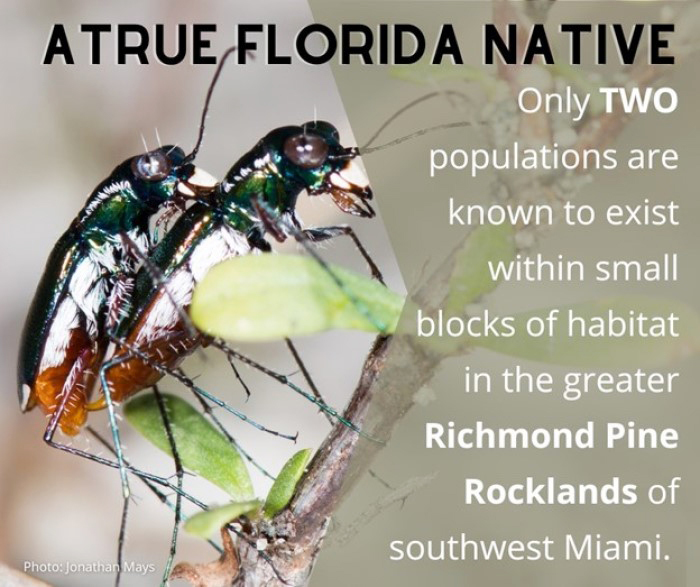 Let’s get granular with a true Florida native trying its best to persist! The federally endangered Miami tiger beetle (Cicindelidia floridana) is found only in the greater Richmond Pine Rocklands of southwest Miami. This rare, hot, harsh and fire-adapted landscape occurs solely in south Florida and a few Bahama islands. The Miami tiger beetle is dependent on fire to maintain patches of bare ground where adults and larvae live. Once spanning 185,000 acres, less than 2% of the globally imperiled pine rocklands remain in Miami, making prescribed fires difficult due to heavily urbanized surroundings.
Once feared to be extinct, in 2015 FWC and partners began surveys and monitoring for the Miami tiger beetle and, despite its many threats (e.g., development, climate change, exotic/invasive species), small populations continue to persist in a handful of natural areas receiving fire, thinning of pines and invasive plant control.
Multi-agency cooperation and sound management decisions are key for this rare beetle and its imperiled pine rockland habitat to persevere.
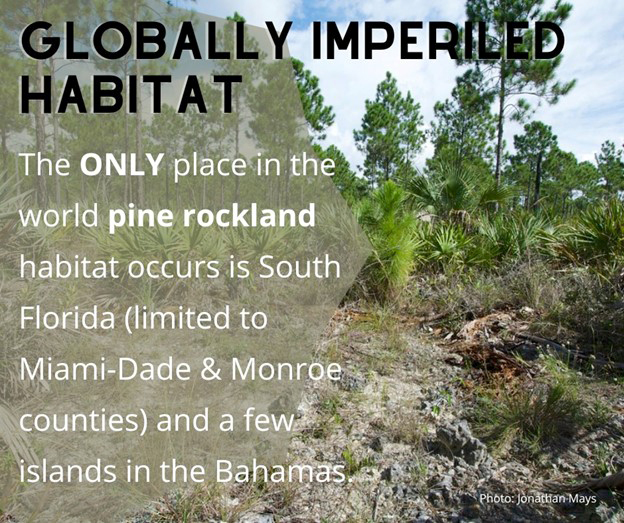 
|
|
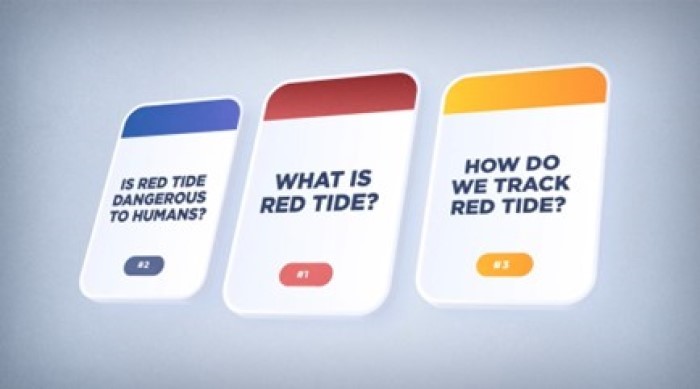 You may have heard of red tide, but do you know exactly what it is? How it can affect you? How it’s studied?
This new video highlights everything you need to know about red tide, its causes, its effects on humans, our environment, plus ways to keep you and your family safe. It was created as part of the communication plan by the Harmful Algal Bloom (HAB) Task Force.
For more information on red tide in Florida: MyFWC.com/redtide
To check on current status of red tide in Florida: MyFWC.com/redtidestatus
The One FWC Employee Survey is an important tool for gathering anonymous feedback from staff. Thank you to those who have already taken the survey.
The 2022 survey closes Tuesday, Sept. 13, at the end of the day. Please take a few minutes and let us know what you think. We value hearing from ALL members of the FWC Team.
On average, the survey only takes 5-10 minutes to share your thoughts by clicking on the link above or picture below.
Please note that you will need to indicate which division you work in; all other questions are optional. The anonymous results will be shared with all employees later in the calendar year.
Thank you for sharing your thoughts! It’s appreciated.
|
|
 After hosting a series of final public open house meetings in August, staff completed the lake management plans for the Harris Chain of Lakes, Kissimmee Chain of Lakes and Lake Okeechobee.
After gathering input and feedback during an 18-month process, FWC staff across multiple divisions drafted plans to balance the biological needs of fish and wildlife with the desires of a wide range of stakeholders. To engage the public on the contents of the plans, FWC staff hosted four open house public meetings on the final drafts.
Lake Management Plans are comprehensive, covering the FWC’s management of a system’s fish, wildlife and habitats. They are designed to ensure management of fish and wildlife for their long-term well-being and the benefit of people. Plans cover management activities within the FWC’s jurisdiction while providing recommendations to partner agencies on items outside of that jurisdiction, such as water levels and water quality. FWC management activities can include, but are not limited to, habitat protection, restoration and enhancement, fish management, and invasive plant management.
For questions related to the management plans, contact Ryan Hamm Ryan.Hamm@MyFWC.com or 904-424-4838 or visit MyFWC.com/Lake-Plans.
For general waterbody information, fishing forecasts, virtual tours, plant control operation schedules and annual workplans, boat ramp information, and more, visit the “What’s Happening on My Lake” website at MyFWC.com/Lake.
View the Flickr album for more photos of the meetings.
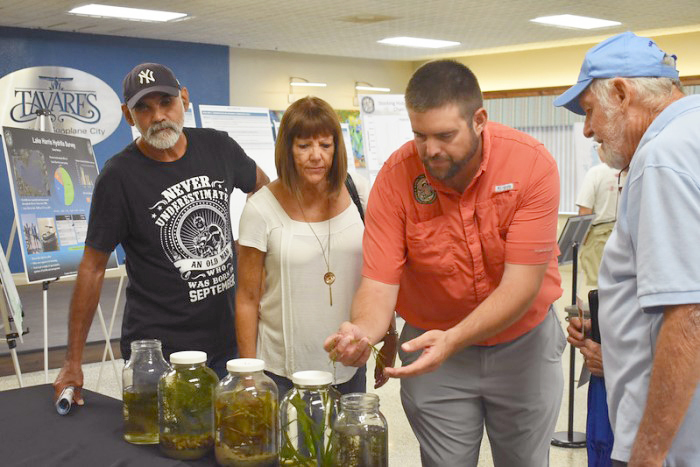
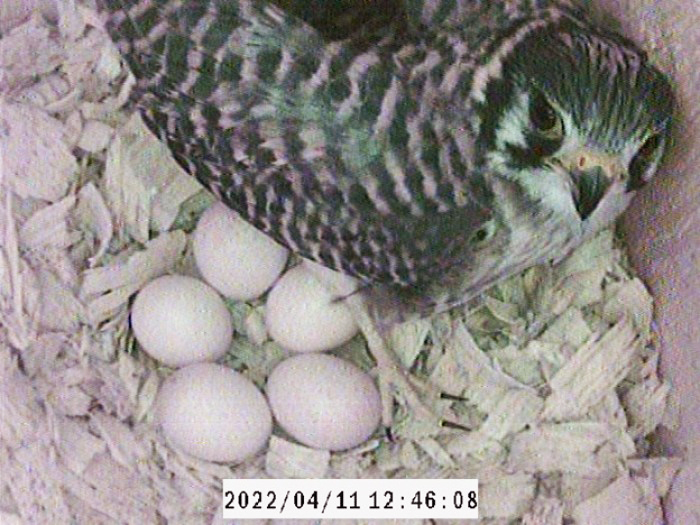 FWRI biologists are continuing to monitor nesting success of the Southeastern American kestrel (Falco sparverius paulus) using nest boxes in key populations in north-central Florida. The Southeastern American kestrel is a state-threatened, non-migratory subspecies of falcon that is genetically distinct from other kestrels in North America.
Biologists and citizens often install nest boxes to expand nesting opportunities for these rare birds and to provide a means to monitor their populations. As cavity nesters they readily use nest boxes during breeding season (March through July).
Learn more about North America's smallest falcon.
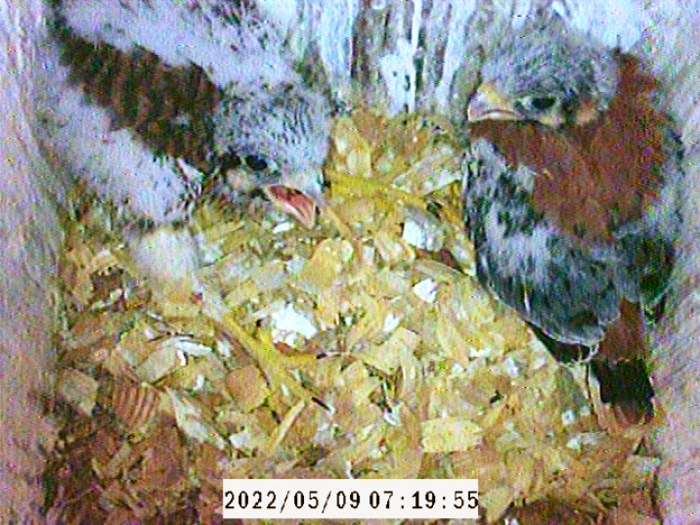
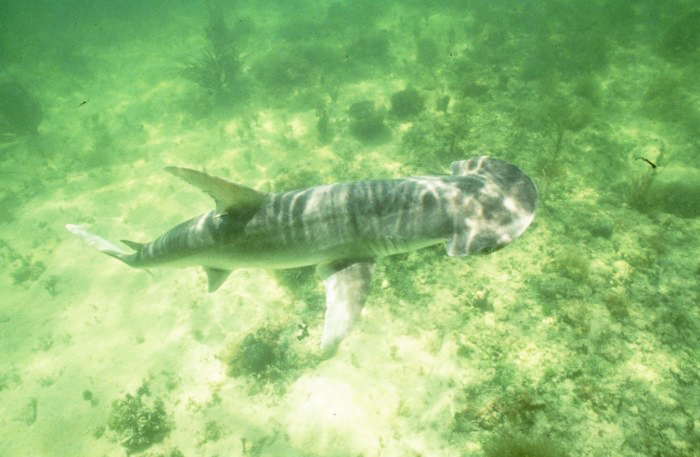 In a recent publication, FWRI scientists examined the feeding ecology of bonnethead sharks (Sphyrna tiburo), one of the most abundant shark species in Florida. This multi-state effort (Florida, Texas, Alabama and South Carolina) aims to complement previous dietary studies of bonnetheads to better understand the ecological role of this species in the southeastern U.S. Overall, bonnethead diet did not vary widely among locations investigated and was universally dominated by crabs, confirming that crabs are the most important prey in the diet of bonnetheads across their range.
The arrangement of their teeth is geared to handle hard-shelled crabs with peg-like teeth in the front part of their jaw and molar-like teeth toward the rear for crushing, suggesting they are somewhat prey specialists.
Seagrasses were also consumed by bonnethead in regions with seagrasses present but these results don’t directly prove that bonnetheads are omnivorous. This does support the concept that bonnetheads may play a more substantial role as nutrient vectors in seagrass ecosystems than previously recognized.
FWC relies on peer-reviewed science for its management; to access this full publication: https://doi.org/10.32800/abc.2022.45.0257
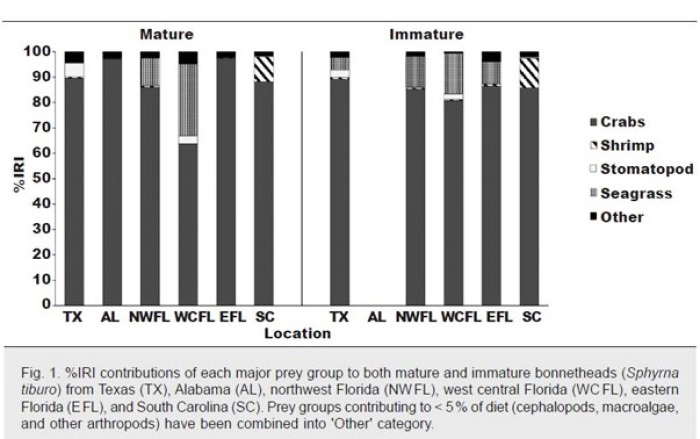
|
|
|
The U.S. Fish and Wildlife Service and the Partners in Amphibian and Reptile Conservation’s Collaborative to Combat the Illegal Trade in Turtles teamed up with conservationist Jeff Corwin to raise awareness about threats to North America’s native turtles and tortoises, and the toll they take on populations.
We are sharing a one-minute video with Jeff Corwin to remind folks that wild turtles are best kept in the wild. So, let’s shellibrate our turtles and #KeepWildTurtlesWild and remember #EveryTurtleCounts.
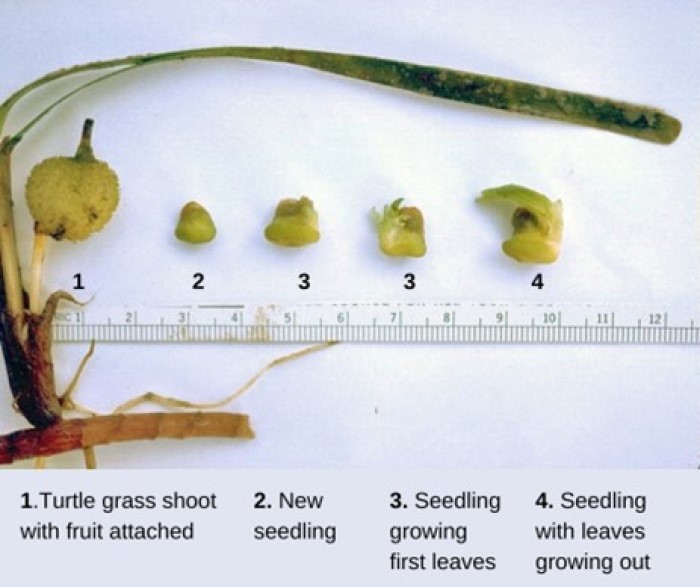 Have you noticed large areas of seagrass loss in St Joe Bay? This loss is largely the result of sea urchin grazing. You can help FWC and Florida Department of Environmental Protection plan seagrass restoration efforts by emailing us the location of any turtle grass fruits and seedlings (see photo) you see when you’re scalloping. You can email us your chartplotter location coordinates or, if the position function is enabled on your phone, take a picture from your boat and send it to: StJoeBayUrchins@MyFWC.com.
Friendly reminder: please do not remove any seedlings or fruits from the water, thank you!
|
|
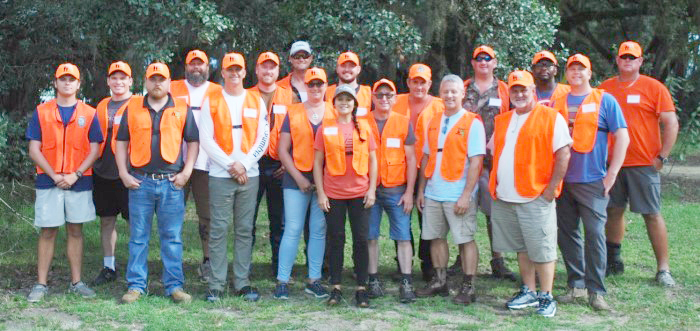 During the weekend of Aug. 27-28, the Youth Hunting Program of Florida conducted its second HuntMaster training of the year. Members from organizations including 10 CAN, NWTF: Gator Gobblers, Indian River County Airboat Association, the FWC Officers Association, the FWC Hunter Safety Program and Florida Maps attended the training with one goal in mind - to introduce people to the world of safe, responsible hunting. Throughout the training weekend, the 18 participants learned how to plan, organize and safely host YHPF hunts including setting up skills trails, overseeing target shooting events and properly setting up tree stands for safe use. These volunteers will now be able to introduce others to hunting by coordinating and hosting mentored youth hunts on private property for the FWC. The FWC is grateful for these new volunteers and we look forward to working with them. Learn more about volunteering for the Youth Hunting Program of Florida.
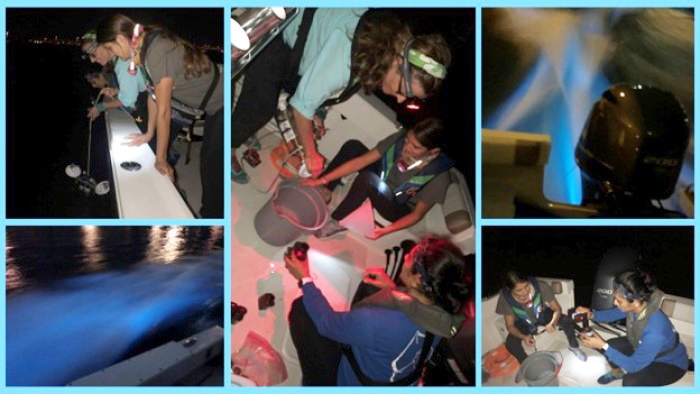 Pyrodinium bahamense is a single-celled alga that blooms in Old Tampa Bay and the Indian River Lagoon during the summer. Blooms of this microscopic species become visible as red or rusty brown patches on the water’s surface. At night, this microalga shows off an intriguing trait -- it produces bioluminescence, resulting in a blue glow when water with high cell concentrations is disturbed (such as paddling a kayak or the wake of a boat). It’s theorized the bright glow might act as a defense mechanism to scare off its predators. These images are from a 30-hour summer sampling effort to better understand Pyrodinium’s vertical migration in the water column, where our scientists were rewarded with this beautiful phenomenon!
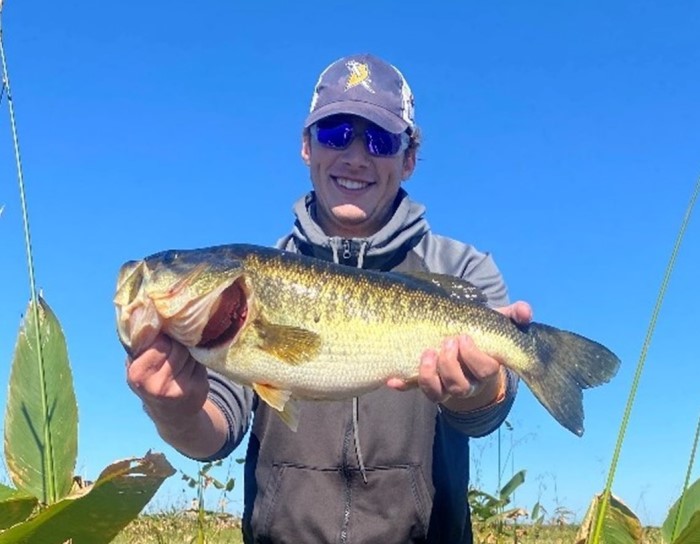 Freshwater Fisheries Biologist, Arthur Bernhardt, can’t say enough good things about Jake Coon, “Jake has allowed our office to continue our operations seamlessly and has become a reliable member of our team during a very busy time of year. Need otoliths read? Boom! He's on the scope for 8 hours. Short a crew member for electrofishing? Boom! He is on the boat, net in hand! Need to find some tagged fish in the river? Boom! He has the antenna! We have been impressed by his can-do attitude, eagerness to learn, and ability to help wherever needed.”
We are grateful for Jake’s service. He is exceptional. Thank you, Jake!
|
|
 Archimedes' Principle
By Forest Rothchild
Have you ever had that ah-ha moment when in the shower or bathroom? Archimedes, the Greek mathematician, discovered the principle of buoyant forces while sitting in his bathtub. The idea is that when an object is partially or entirely submerged in water, it experiences weight loss equal to the weight of the water displaced by the in-water part of the object. If the force of gravity pulling the object down is less than the buoyant force, the object floats in the liquid.
 The SW Dive Team, in efforts to maintain waterway safety and enhance environmental conservation, recently trained on vessel removal. To understand why a vessel floats or, frequently, why derelict vessels don't, one needs to understand Archimedes’ principle.
 (Original artwork generated by Forest Rothchild using Mid Journey AI/imagine)
So how does that affect vessels on the water and why do boats float? A steel bar will disappear into the depths when dropped into water but a boat made of steel floats. Why? With all the empty space on a boat taken up by air, the space makes the vessel less dense than water and much less dense than a solid steel bar. When something is of less density, it will float on liquids of greater density. But something as simple as a missing port plug in the bottom of a boat can cause it to sink. As air is forced out of the boat it is replaced by water, changing the density of the boat to the point that it's more dense than the surrounding water, at which point it goes down.
 (Original artwork generated by Forest Rothchild using Mid Journey AI/imagine)
Archimedes principle came into play recently when the SW Dive Team worked with Hillsborough County Marine Safety to try and raise a submerged vessel for removal. Due to the water in the hull, it would no longer float without artificial assistance.
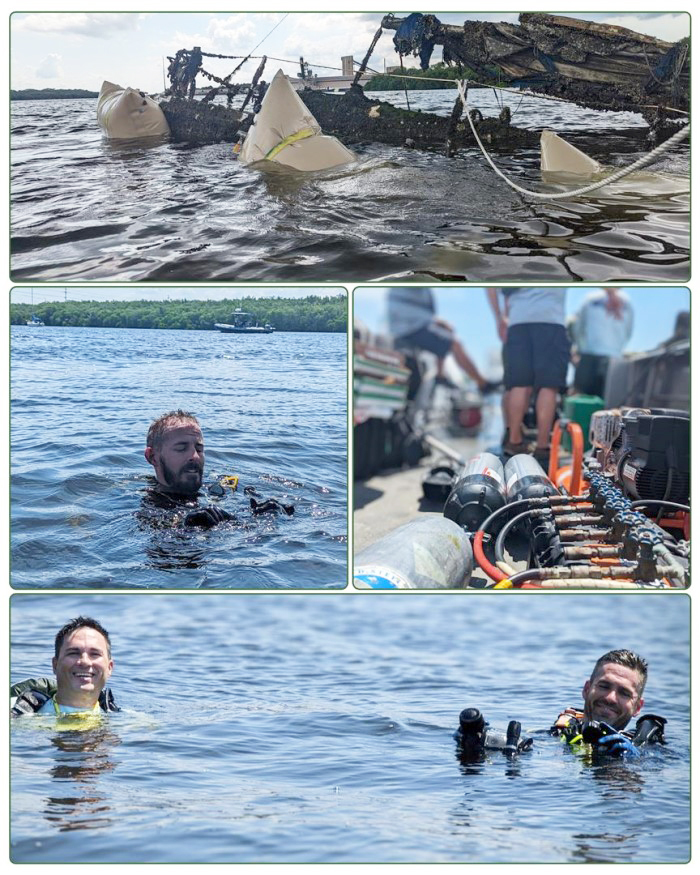 Lt. Burks, Investigator Buckson, Officer Specialist Alvis, Officer Specialist Klobuchar, Officer Gonzales and PIO Rothchild spend a day attempting to displace the water in the flooded vessel to create buoyancy. In total, over 12,000 pounds of lift bags were used to stabilize the vessel, along with a water pump.
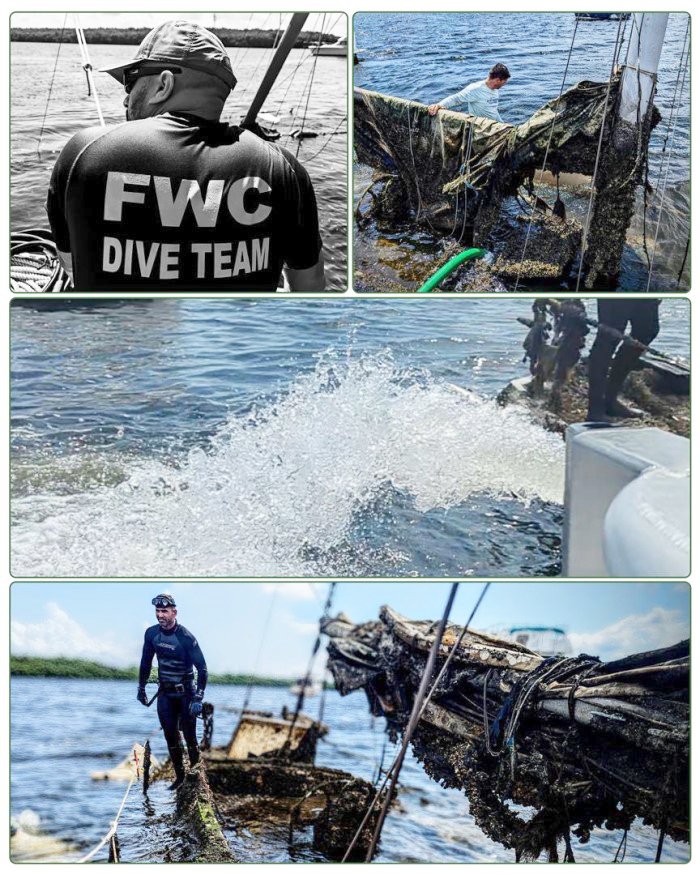 In the end, the vessel's density (barnacle encrusted, sediment filled, water logged) was too much for the tools on hand and the team was not able to successfully lift the boat. The Hillsborough Marine Safety team is scheduled to return with more lift bags to facilitate the raising and removal of the derelict vessel. This interagency teamwork is helping keep Hillsborough County waters clean.

 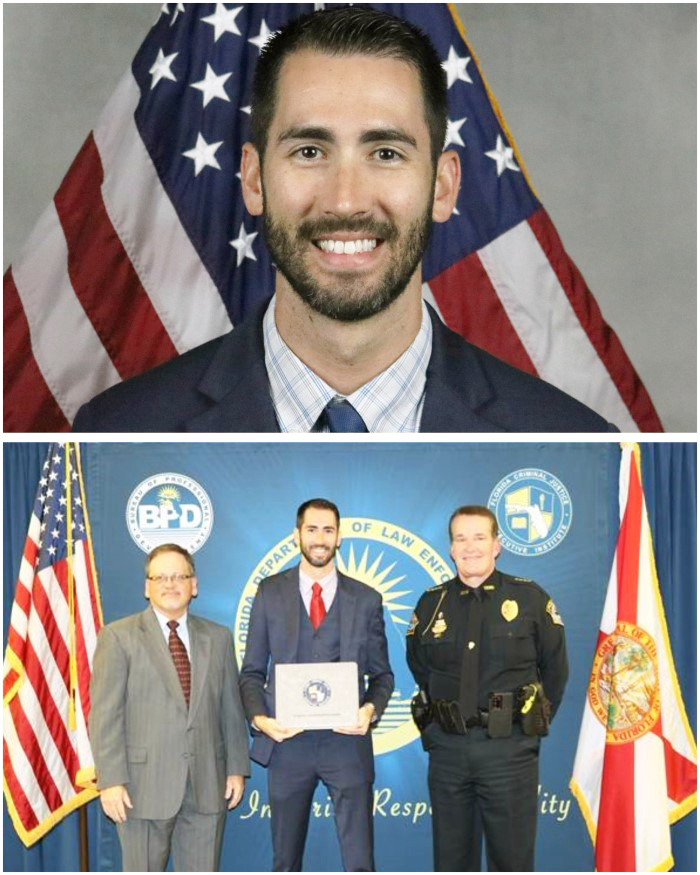 Congratulations to Southwest Captain Matthew Dallarosa.
The Florida Criminal Justice Executive Institute announced the graduation of the Florida Leadership Academy, Class 51.
The graduates met for four week-long sessions at the Cape Coral Police Department in Cape Coral and graduated Aug. 12. They learned skills necessary to support the needs of their agencies and their communities as they prepare for future challenges.
The goal of the Florida Leadership Academy is to prepare first-line supervisors in criminal justice organizations to exemplify the character and integrity expected of criminal justice professionals and to examine the various components necessary to being an efficient leader.
 Citizens and FWC customers were so impressed by the following employees, they told us about it through email on the "Praise an Employee" page of MyFWC.com/Contact. When your coworkers receive kudos, help share the good news by contacting Kelly.Broderick@MyFWC.com.
Investigator 2 Kenneth Holmes
Wanted to bring to your attention an outstanding employee and service provided by the FWC. I live in a neighborhood in north Gilchrist County. We had a deer entangled in what appeared to be a cooler lid. First the girl had her head stuck in the lid and later got her front leg caught as well. She is the matriarch of her rangale with two nursing fawns.
It wasn’t going to end well for her and the entire neighborhood was concerned. These neighborhood deer have become part of our community. Several of us called the FWC and Investigator Holmes got involved. He was diligent in his pursuit and was able to dart the deer and relieve her of the cooler lid. Holmes is a gentleman and an asset to the FWC.
This is a great public relations event that FWC should take advantage of. I am a hunter and am still moved by the successful rescue of this deer. A situation that was created by people.
I have included a video of the deer.
Gabe Prichard, HSC
I just wanted to reach out and say how fantastic Gabe is. He is awesome, lat out.
Nancy Sheridan, MFM
My wife and I moved her from Maryland about six years ago. I’m an avid fisherman and have enjoyed the pristine waters in Charlotte Harbor, as well as the Gulf in southwest Florida.
The purpose of this email is to sing the praises of one of your FWC employees. The individual that deserves recognition is Nancy Sheridan. She was extremely helpful answering questions I had in reference to crabbing regulations that were very confusing to me as a recreational crabber here in Florida.
In Maryland, I used a trot line and hoop traps. I believe the hoop trap here is labeled as a drop net. The regulations for what we called pots in Maryland (traps here), are very specific and are easy to follow. However, not so much when trying to find information regarding trot lines or throw nets. I assume that your regulations are set up that way because a very large majority of crabbers use only traps.
I read the regulations, talked to commercial crabbers, as well as those working in bait and tackle shops in my area. Nobody had an answer. I finally called FWC and, luckily, contacted Ms. Sheridan. I fully expected a runaround, continually passed from department to department or being told “I’ll get back to you” and never hearing from them again. This is the norm nowadays.
My questions were about length of trotline, how many drop nets can I use, do I need to take the survey/test if using a trotline or throw nets, etc. Ms. Sheridan didn’t have answers to my questions right away (who would?) but stayed on the line with me and we looked at the regulations together. I was very surprised to see her take so much time with me trying to get my answers. Since it isn’t spelled out, she gave me her opinion about my questions and to consider those opinions as the regulations I should abide by.
Ms. Sheridan was extremely helpful, easy to speak to and a consummate professional. She followed up with emails to me with further explanations and made sure to tell me that she would be happy to help me out with future questions. It was refreshing to find someone so helpful who went above and beyond as much as she did. You are so very lucky to have an employee such as Ms. Sheridan and I can’t complement her enough.
Officer Joshua Stallings
I just ran into one of your officers up here in Okaloosa County. I was down on the military reservation beach and he came over to check passes. I believe his name was Josh Stallings. What an awesome representative of FWC. That guy was so nice and pleasant and full of information about the area. I think we talked for about 20 minutes. Good dude.
Tony Young, HGM (three commendations)
Outstanding customer service. Extremely helpful!
Tony Young went beyond the call of duty to help me understand the game laws of Florida and I felt at home in a classroom being instructed by a teacher that wanted the student to succeed! What a gift this man has, even my wife understood perfectly the discourse. We could use people like him teaching in our schools even and this was done on the phone, imagine that!
I called to inquire about Florida hunting laws and regulations. It's been a long time since I've been in the woods hunting and I wanted to get familiar with some things before going out. The lady who answered was very polite and helpful indicating she'd have to transfer me to Tony Young and if I had to leave a message that he is very good about calling people back. I did in fact have to leave a message and he called me back in less than 15 minutes. From the very second of speaking to Tony he was energetic and enthusiastic about my questions. He listened intently and was very thorough and easy to understand as he gave me the legal answers to my questions. After 10 minutes or so I thanked him and them we said goodbye. The next part was the part that was VERY unexpected and HIGHLY unusual, in a very, very, good way. He texted me a tremendous amount of incredibly helpful information that outlined very specific areas all around the state that aligned with what I was looking to do; quotas verses no quotas in all or part of the general gun season, a map outlining ALL the public land hunting areas around my region and the Florida regions that have the biggest populations of game I was looking to hunt and the best hunter harvest successes. He also encouraged me to call or text him any time with questions. I couldn't have asked for anything more. Well, I guess I could have asked if I could go hunting with him because he'd probably take me to the best spots!!! But seriously, I can't say enough about how amazing he was and how genuine he was with me. My father retired from the State working with the forestry service and I've seen first-hand how cold things can be from state organizations. Tony set an example at the highest level and quite honestly, I will never forget it. I can't say enough about him. Wow man. Just wow. I look forward to talking to him more in the future and I will most certainly give his contact information to the guys in my circle.
Donna Carpenter, OLP
Donna Carpenter in OLP is the one person in charge of handling all the FWC alligator tags, which amounts to 7,300 of them… times two! That’s almost 15,000 tags! She is in the office early every day – ramping up to alligator hunting season. When she was contacted by customer Clint Nowery, he explained that his tags were lost in the mail and that he needed his tags ASAP because of his upcoming alligator hunt with his family that weekend. Donna quickly sent the replacement tags out and the customer had a successful hunt – as seen here with the 11-foot alligator they harvested! The email excerpt from confirms what her co-workers knew all along -- Donna Carpenter is an appreciated and valuable member of our staff:
“Donna, just wanted to follow up. My boys and I had an incredible time, it was a memory we will remember for many years to come. Thank you again for going the extra mile.” - Clint Nowery
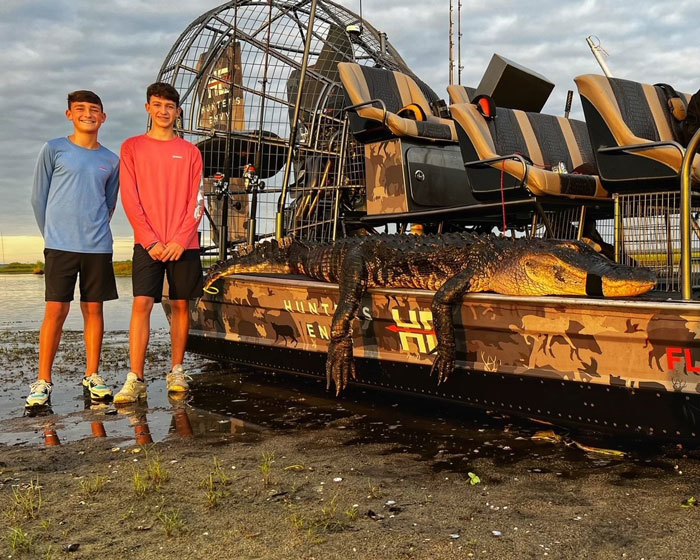  Congratulations to the following employees for reaching 5-year milestones of employment with the FWC.
|
|
35 Years
Billy Sermons, NW Region
25 Years
Luiz Barbieri, FWRI
William Dockery, FBO
Robert Kawula, FWRI
Keith Mille, MFM
20 Years
Kevin Grover, LE
Ronald Zinkel, HSC
15 Years
Casey Dorsch, HSC
Nate Robb, FWRI
10 Years
Nicholas Bohne, LE
Dionis Delgado, LE
Amanda Mattair, FWRI, (April)
Lauren Roberson, LE
Matt Smith, HSC
Matthew Stuhr, LE
Marcin Trawinski, LE
Andy Wraithmell, CR
Jonathon Wright, LE
|
5 Years
Nick Alcaraz, FWRI
Kirk Dunn, FWRI, (January)
Elizabeth Horner, FWRI
Jenna Katrina, LE
Lacey McClenithan, HSC
Bridget McDonnell, LE
Jane McMillan, FWRI
Anna Panike, FWRI
Retired!
Inv. Laurie Luher, LE – 35 Years, 5 Months
Arnold Brunell, FWRI – 33 Years, 7 Months
Fred Robinette, HSC – 32 Years
Jennifer Fitzwater, OED – 30 Years
Officer Timothy Shearer, LE – 13 Years
|
|
(The FWC has a great many non-FTE employees, and they deserve recognition for reaching 5-year milestones too. Unfortunately, the system doesn't keep track of such statistics; but we don't want that to stop us. If you know of a non-FTE employee about to reach a 5-year milestone, please notify the Inside Job by email.) |
|

|
FWC employees have some of the most interesting jobs ever! Here are some of our employees doing what they do best. Send your photos of FWC employees in the office and in the field to Kelly.Broderick@MyFWC.com.
|
Northwest Region Law Enforcement hosted a booth to educate the public about the many aspects of the division at the Soaring out of Summer Celebration in Altha on Aug. 20. The event highlighted healthy living and various resources available to Liberty and Calhoun counties and featured vendors, food trucks and live music. An estimated 4,000 people attended.
ON THE MASTHEAD: L to R - NW Region Director Jon Creamer, Officers Jared Carr and Ruel Raker, Lt. Ben Allen, Officer Matthew Gore and K-9 partner Kane.
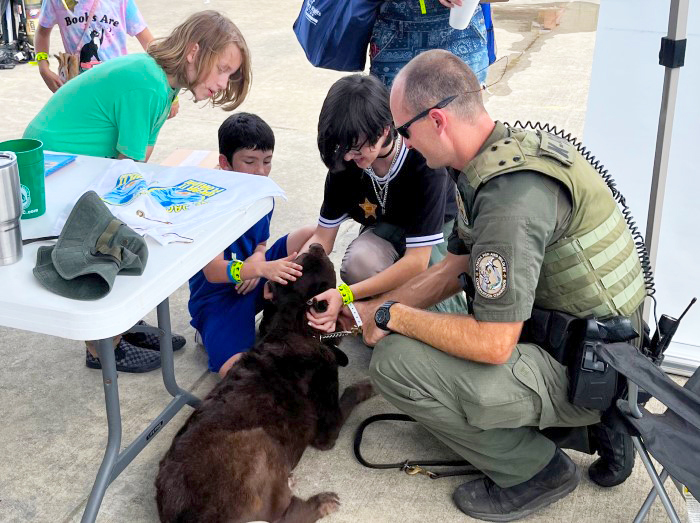 Officer Matt Gore and K-9 partner Kane with young event visitors.
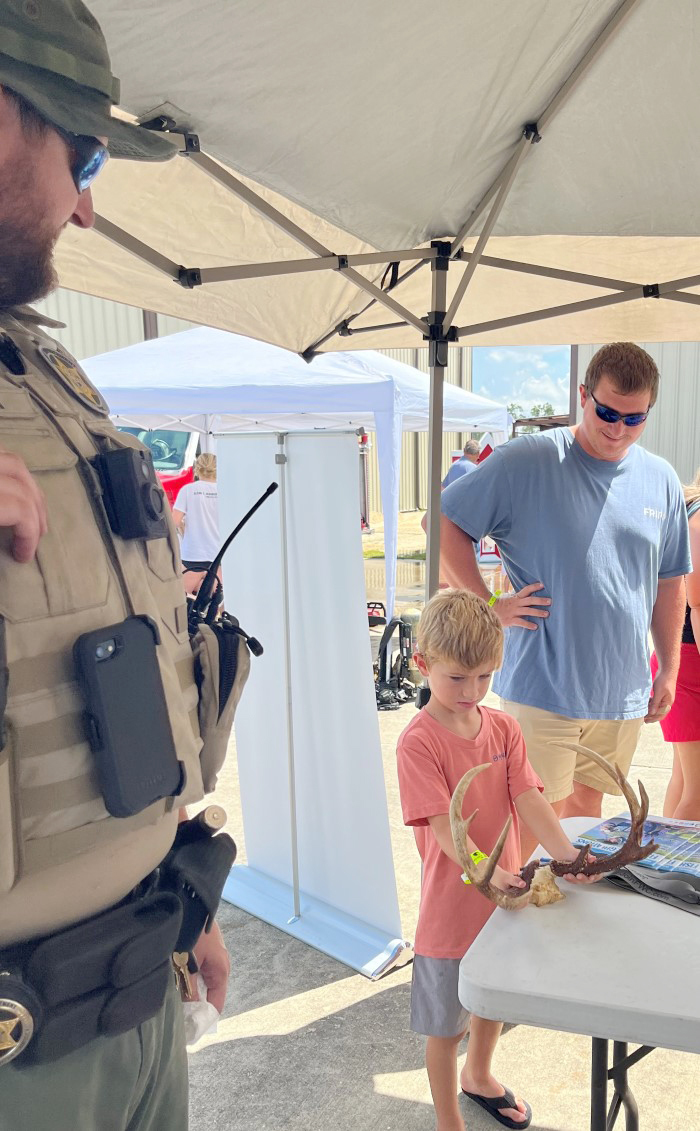 Above: Officer Jared Carr and young wildlife enthusiast.
Below: Officer Jared Carr gives young visitors a tour of an FWC airboat.
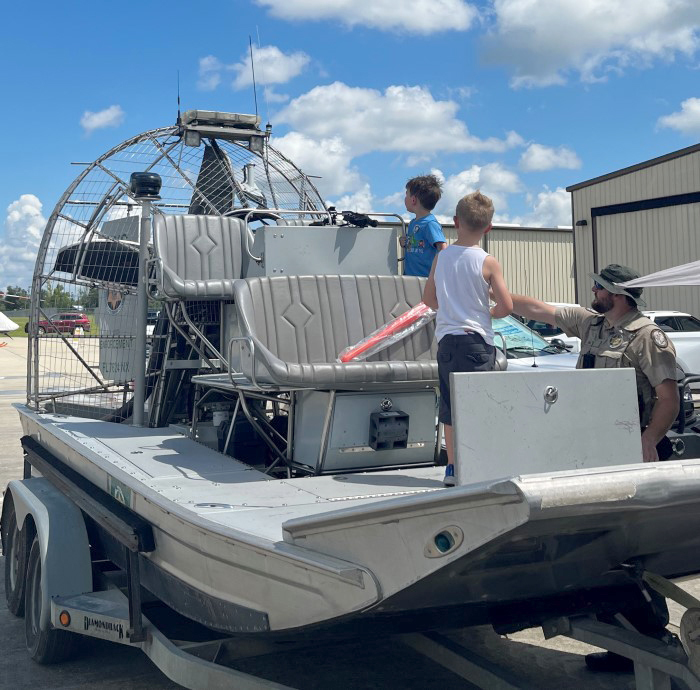
 Keiyi Okamura (pronounced KG) – Suncoast’s AFS Hutton Scholar 2021 turned Camp Counselor. (profiled in the prior issue of Inside Job)
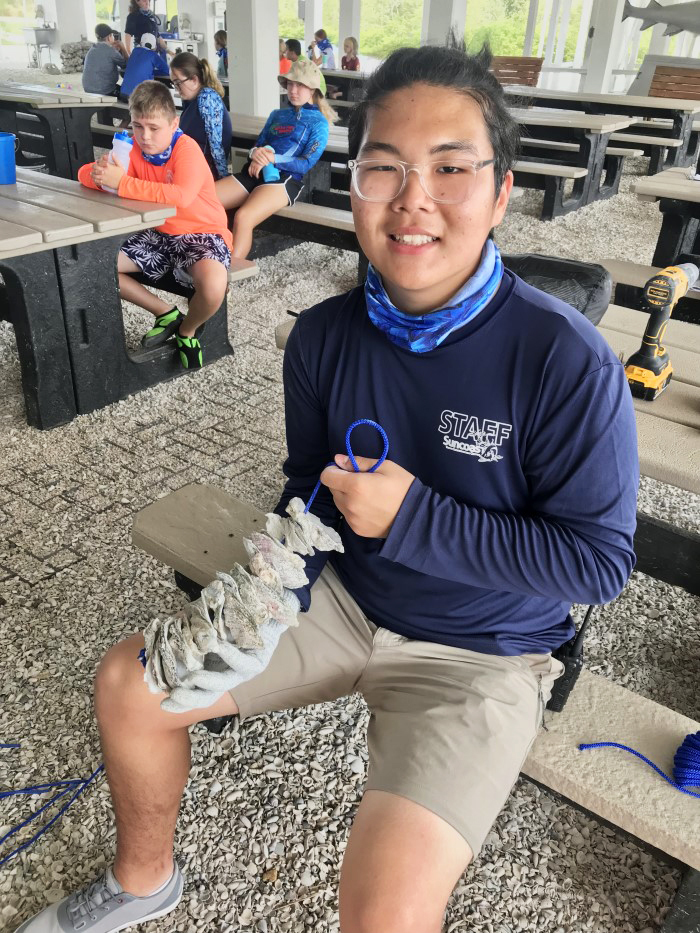
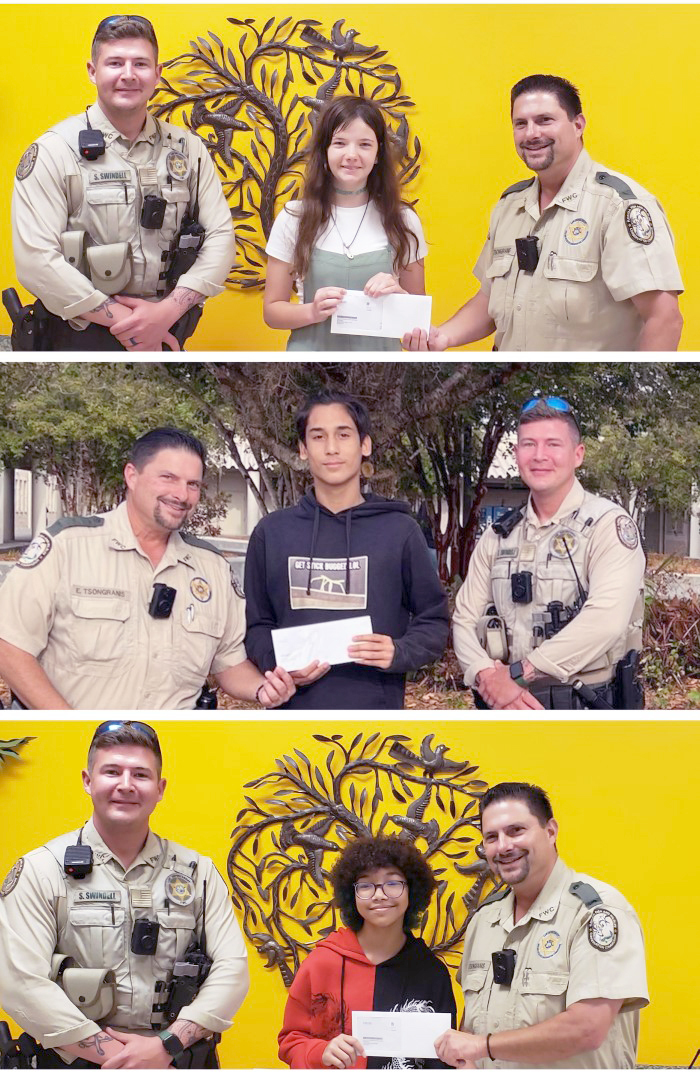 Southwest Senior Officer Manny Tsongranis giving rewards through our “Wildlife Alert Reward Association.” These three individuals provided information/video footage of two high school students feeding an alligator that ultimately resulted in Senior Officer Manny Tsongranis locating and charging them for the violation.
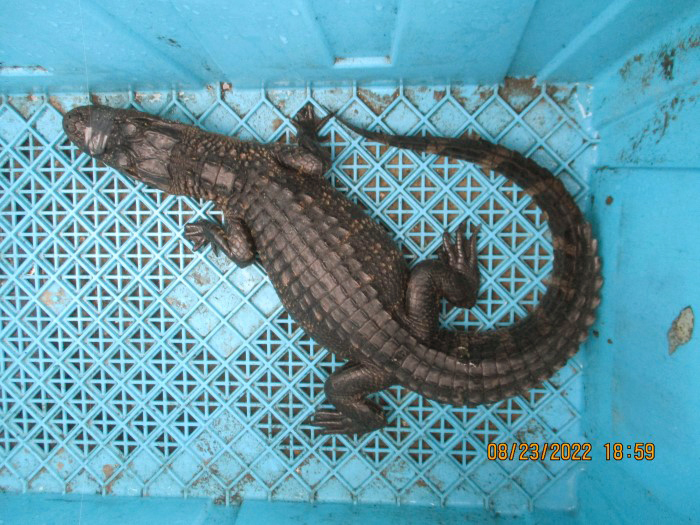 Southwest K-9 Officer Malachi Wilkins and Officer Eamon McCormack responded to a call about an individual who was keeping an alligator as a pet inside a homemade pond in their backyard. When the officers arrived at the residence, they tried to make contact with the homeowner who did not respond to the door. The officers surveilled the house for several hours and observed the homeowner exiting his residence. It was at that point they approached the subject. The subject allowed the officers into the backyard where an approximately 2-foot alligator was found in an enclosed pond. The homeowner was cited for possession of the alligator.
FWC's Division of Law Enforcement SW Dive Team and One of the Tools They Use
Search and recovery missions are dangerous for divers. Traditionally, divers are deployed to a location and must navigate through the murky water and hope to come across what they are looking for. With zero visibility, these divers must rely on touch to move around to locate their target.
 Investigator J. Cooke teaching team members how to use the DIDSON.
SEEING WITH SOUND
One of the tools the dive team uses is a system call DIDSON, a hand-help underwater sonar device. The DIDSON imaging sonars transmit sound pulses and convert the returning echoes into digital images, much like a medical ultrasound sonogram. The advantage is that they can “see” what’s going on through dark or turbid (cloudy) water in zero visibility conditions.
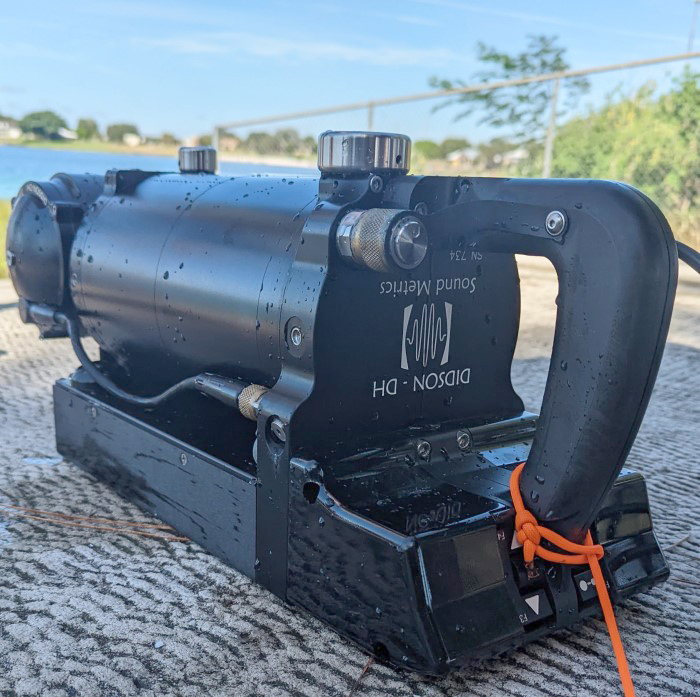 The DIDSON is neutrally buoyant underwater and is about the size of a shoe box.
Why use sound in the first place? Sound wavelengths in water are about 2,000 times longer than those of visible light. Because of its longer wavelengths, sound can go around suspended particles that would otherwise block and scatter light waves. Light can’t penetrate very far in these conditions, making underwater cameras ineffective.
The depth at which the sonar is deployed has no direct effect on how clearly an imaging sonar can capture a target.
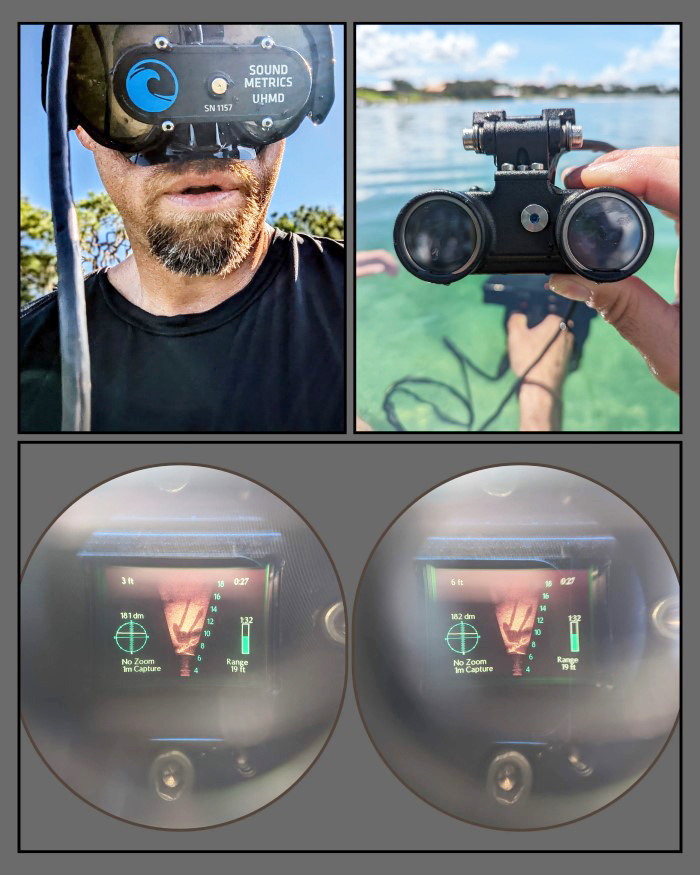 Lt. Spoede calibrating the DIDSON while wearing the HUD unit.
With an imaging sonar, instead of swimming aimlessly, a diver can deploy with the DIDSON. The sonar is able to scan the surrounding area. Scanning a large area takes only a short time. The diver can quickly assess the nature of the surrounding area, thereby eliminating objects that are not of interest. The ability to “see” a long distance underwater allows the diver to use natural (or human-made) features and targets as position references. Through the use of technology, the team is able to minimize the diver's time in the water.
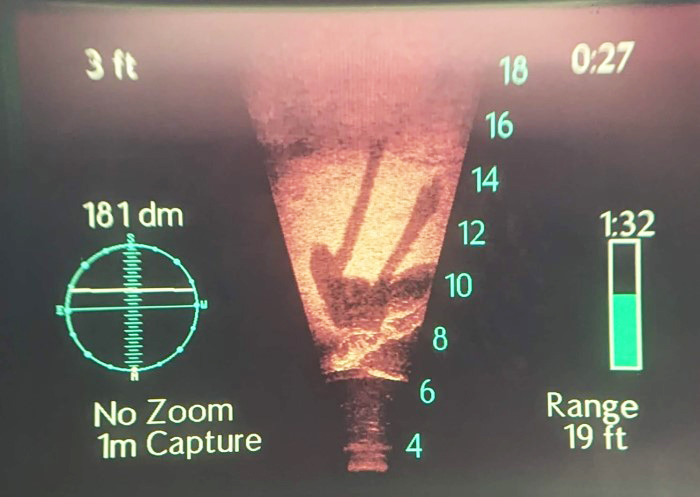 While using the DIDSON, the team locates a submersible mannequin.
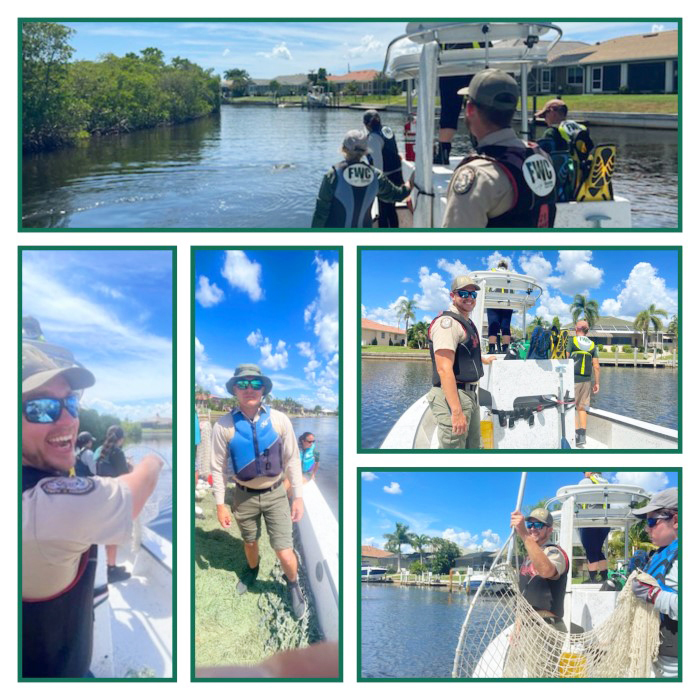 Southwest Region Officers Nick Biondo and Kelly Zenoniani were notified of a manatee in distress in Punta Gorda. The officers joined the FWC Marine Mammal Rescue Team in trying to capture a juvenile manatee in distress. Although this particular capture attempt proved unsuccessful, it highlights the great team effort between FWRI and DLE!
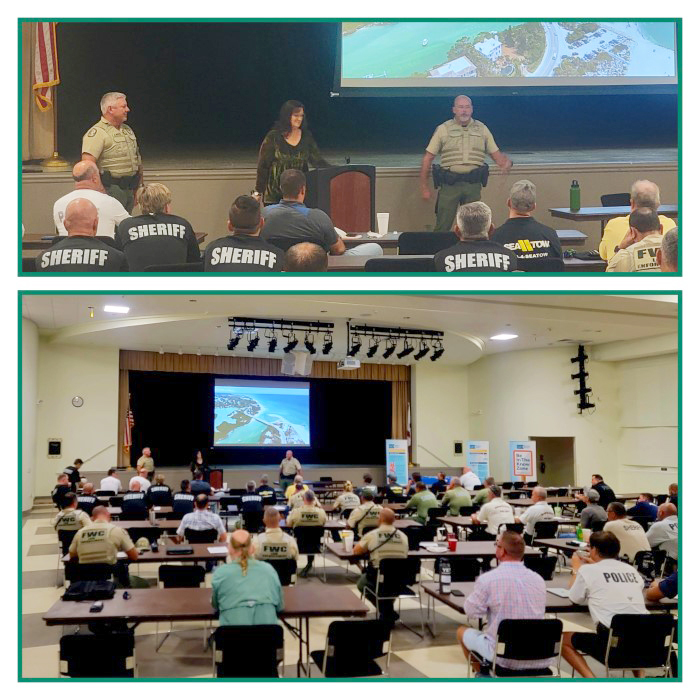 Southwest Regional Commander, Maj. Rob Rowe, along with Capt. Guy Carpenter and Fort Myers area FWC officers were joined by Boating and Waterways section leader Maj. Rob Beaton and FWC legal advisor Brandy Elliot for a bi-annual marine intel meeting in Venice. Law enforcement partners from four counties and multiple municipalities discussed ongoing issues and worked on streamlining communications for better response. Majors Beaton and Rowe, with assistance from Brandy Elliot and Capt. Carpenter, shared with the group the many positive changes regarding handling at-risk and derelict vessels that are being implemented. The new direction was very well received and the discussion productive. Thank you to Maj. Beaton and Brandy Elliot for taking the time to share this advancement with our local partners!
During July, HSC/WHM South Region employees traveled to the Florida Keys WEA to assist FKWEA staff with white-crowned pigeon surveys while simultaneously meeting their new employee onboarding orientation requirements. In the Keys, white-crowned pigeons nest on small offshore islands.
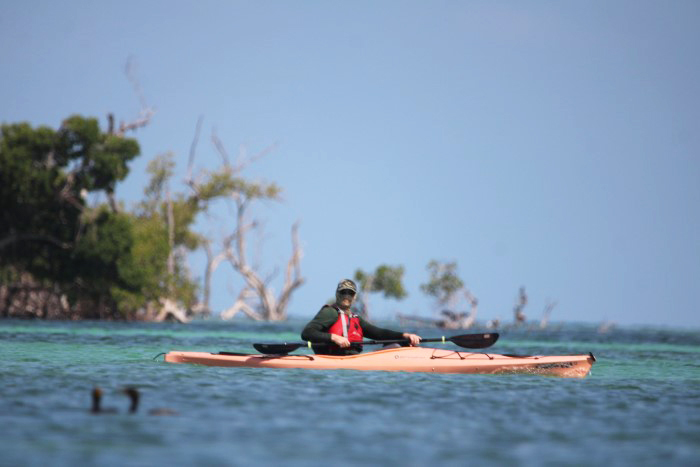 Sean McHugh (Dinner Island WMA)
 Above: L to R - Jessica Majors (OK Slough WMA) and Carrie Kimbrough (Fisheating Creek WMA)
Below: L to R - Miguel Silva (Spirit of the Wild WMA) and Cole Luttrell (Spirit of the Wild WMA)
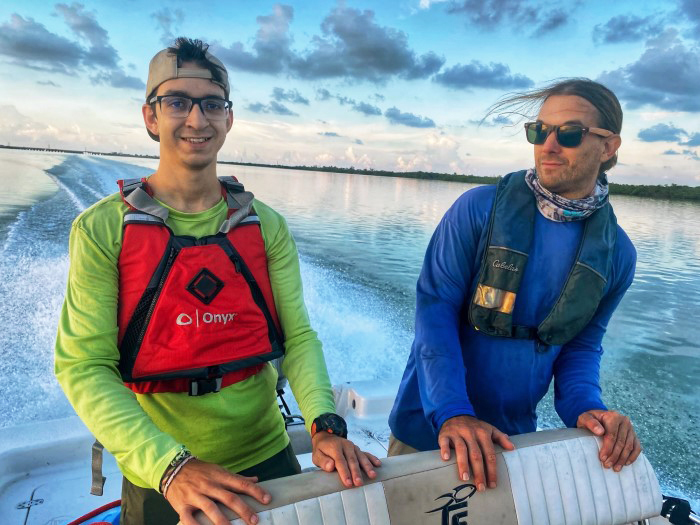
 Southwest Region’s Senior Officer Brad Bell, Officer Grant Self and Lt. Stuart Spoede were returning from water patrol when they spotted a pelican with a long metal leader hanging out of its beak on a dock. Officer Bell was able to catch the bird with a hoop net from the patrol boat and he and Officer Self were able to safely remove the hook and leader. The bird appeared otherwise healthy and flew away with no issues. Well done, fellas! #birdsarepeopletoo #pelicanpolice
 Southwest Region’s K-9 handler Officer Valerie Garcia and Lt. David Barrett were on patrol in Cecil Webb WMA when they heard nearby gunshots. As they investigated, they found a car parked on the shoulder of Tuckers Grade and two men in the middle of the intersection. As she approached the men, Officer Garcia spotted a handgun in full view in the rear seat of the vehicle and asked the two what they were shooting. After initially denying shooting anything, Garcia explained to them that her K-9, Jenny, was trained to find spent shell casings and she asked them again what they shot. They eventually admitted to target shooting at a sign, hitting it four times out of five. Officer Garcia brought K-9 Jenny out and she alerted to four spent rounds in the grass nearby. The shooter was charged with criminal mischief and discharging a firearm in a public place. After the two were released, K-9 Jenny was brought out one more time and she found the fifth spent round. This was Jenny’s first case! Great job Officer Garcia and Jenny!!
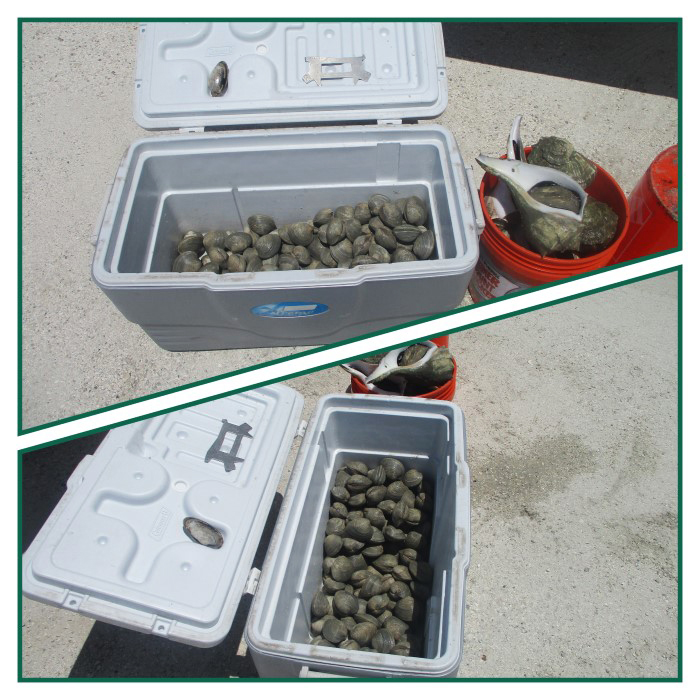 Southwest Region’s Officer Grant Self and Senior Officer Brad Bell received a tip from a Lee County Park Ranger regarding two people harvesting live shellfish on Ft. Myers Beach. The officers arrived on scene, found the two people described to them, and conducted a resource inspection. They were found to be in possession of 142 live hard clams harvested from an unclassified area, nine live lightning whelks, and one live sunray venus clam. The individuals were issued criminal citations and one infraction. The shellfish were seized and returned alive to the water.
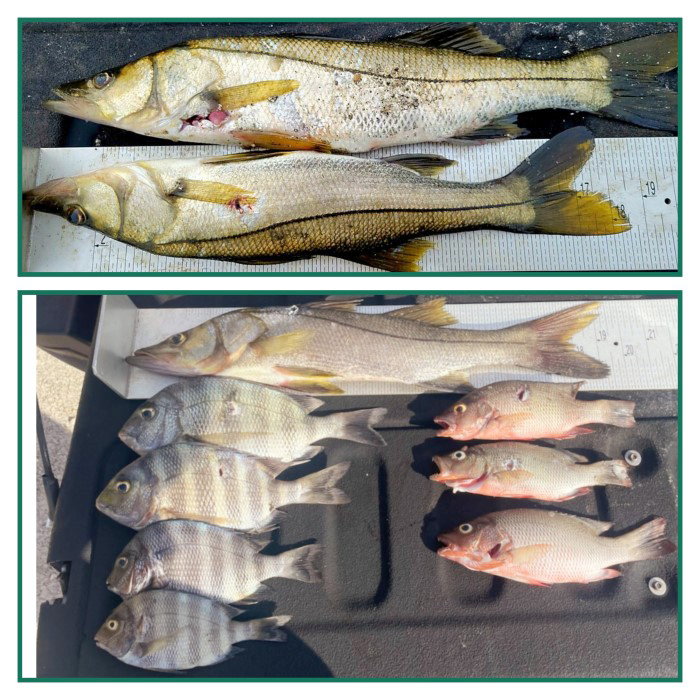 Southwest Region’s South Skyway Fishing Pier is always a busy place. Officer Specialist Aaron Gonzales was on land patrol when he conducted a resource inspection on two individuals who he had seen spearfishing in the area. The resource inspection revealed the subjects had speared and kept two undersize snook. In a separate inspection two days later, Officer Dalton was conducting resource checks when he observed an individual carrying a stringer of fish from under the relief bridge. On the stringer, Officer Dalton found one undersize speared snook, four undersize sheepshead and three undersize mangrove snapper. All the individuals were cited for their violations. Keep up the great work Aaron and Jason!
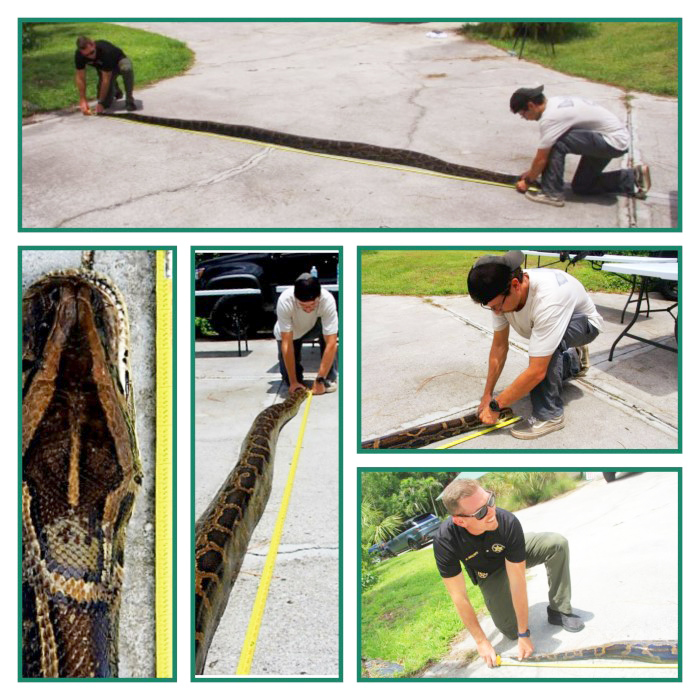 Southwest Region’s PIO Adam Brown, along with HSC’s Wildlife Impact Management biologist Alex Furst and Ryan Sheets with the HSC Communications Team, were invited to measure and weigh a very large python captured just days before the official kick-off to the 2022 Florida Python Challenge®. Three college students were home on break in Collier County and decided to go python hunting when they stumbled upon what would end up being measured as a 17-foot, 2-inch invasive Burmese python, weighing in at 110 pounds! Although this was not a state record, the novice hunters were thrilled none the less. Media was on scene and promoted the event as another great success for Florida’s native wildlife. Learn more about Burmese pythons.
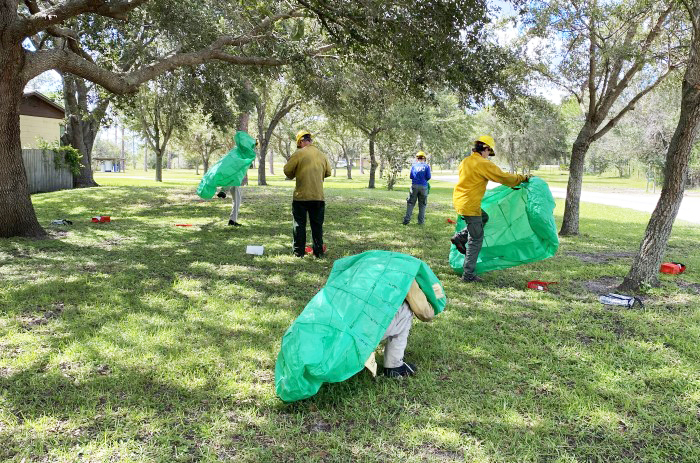 On Aug. 17, crew from Babcock Webb, Orange Hammock and Platt Branch participated in the annual fire shelter training at the Babcock Webb office.
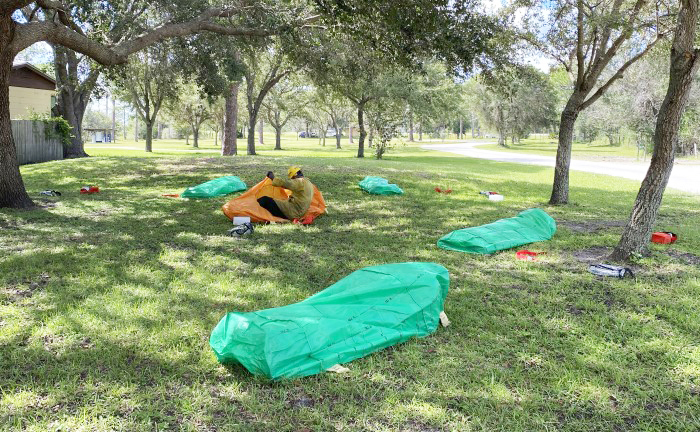 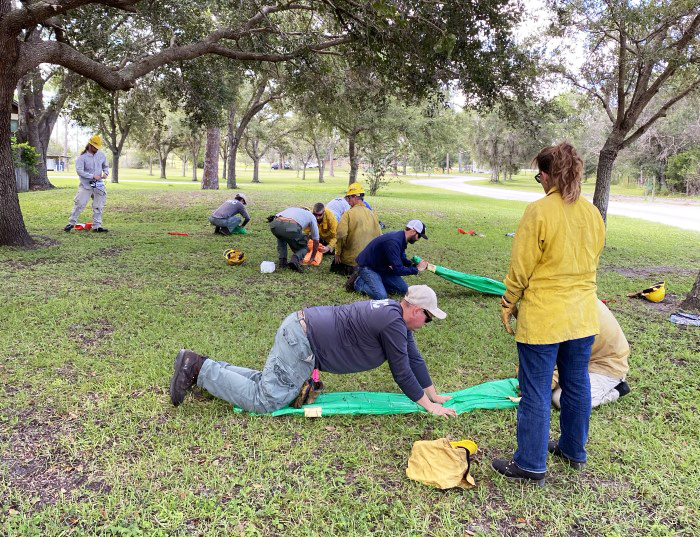
|
|
The deadline for the Sept. 19 issue is Monday, Sept. 12
The Inside Job is a bi-monthly newsletter featuring
the employees and programs of the FWC.
Send your submissions, comments and questions to Kelly.Broderick@MyFWC.com.
|
|
|
|
|